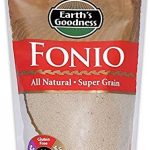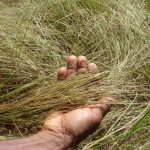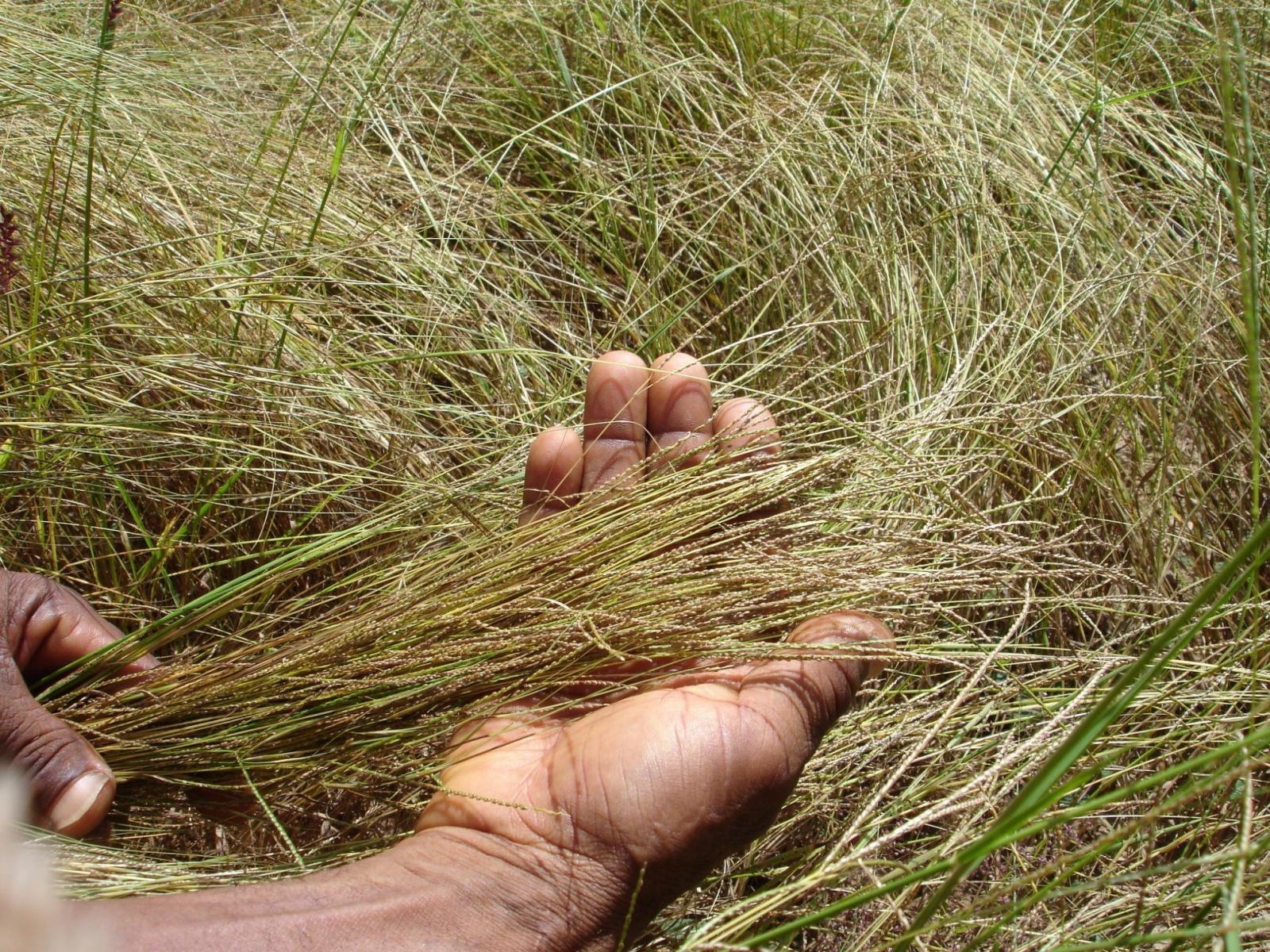10 health benefits of fonio (Acha) – Acha and Diabetes, health benefits of acha
Fonio or hungry rice, hungry millet, hungry koos, fundi millet or Acha (Digitaria exilis, Hausa) or Iburu (Digitaria iburua, Hausa): A small grain with enormous nutritional potentials.
Fonio is possibly the oldest indigenous cereal cultivated in West Africa. The domestication of fonio seems to go back 7000 years, but the first references to fonio as food date from the fourteenth century. The Dogons of Mali, an ancient people, refer to the fonio seed as “the germ of the world”. They believed that the whole universe emerged from the fonio seed – the smallest object known. The production of fonio declined sharply in the 1960s but began to recover twenty years later. The increase in production can be attributed to larger areas being cultivated.
Although average production per hectare remains relatively low, it has remained consistent at 600 – 700 kg/ha. At present, fonio is grown on more than 380,000 ha and produces 250,000 tons of grain annually. Fonio supplies food to several million people during the most difficult months of the year when other food resources are scarce.
In West Africa, fonio is considered to be the tastiest of all cereals. Serving fonio as a dish at festivals or important ceremonies is always a good choice because of its fine and delicate taste. As a popular proverb says “Fonio never embarrasses the cook”. Fonio is also known for its nutritional properties.
Although the protein content of fonio is similar or slightly lower than that of other grains, it contains amino acids like methionine and cystine which are essential to human health. These are often deficient in today’s major cereals. Fonio, regarded as a minor cereal for a long time and referred to as the “cereal of the poor”, is attracting renewed interest in the urban areas of West Africa because of its cooking and nutritional qualities.
Agricultural policies in the region are also changing in favour of traditional crops to try and decrease dependency on imported food products. Fonio cropping cycles vary from 70 to 150 days depending on the variety. Varieties with a very short cycle (70 – 85 days) allow the farmers to harvest early and enable them to cover the critical “hunger” season before the major food crops can be harvested.
Farmers generally cultivate fonio on light sandy or stony soils as the crop is not very demanding. The late varieties, in particular, are well adjusted to poor soils. This small grass, which reaches heights of 30 – 80 cm, is very robust and can resist periods of droughts and heavy rains. Farmers in Mali, Burkina Faso, Ivory Coast, Nigeria and Senegal also cultivate the small cereal. West African farmers mainly cultivate white fonio (Digitaria exilis), which is also called fundi, findi, acha or “hungry rice”. In Nigeria, farmers grow black fonio (Digitaria iburua) as well. Black fonio (Digitaria iburua), is restricted to the Jos-Bauchi Plateau of Nigeria as well as to northern regions of Togo and Benin.
Its restricted distribution should not be taken as a measure of relative inferiority; black fonio may eventually have as much or even greater potential than its now better-known relative. As fonio is known to be easy to digest, it is traditionally recommended for children, old people who cannot digest other cereals, sick people and for people suffering from diabetes or stomach diseases.
Health Benefits of Fonio…Health Benefits of Acha
Local pharmacists also recommend fonio for people who want to lose weight. Like other millets, fonio is widely reported to be rich in amino acids but particularly in the amino acids methionine and cystine which supply sulphur and other compounds required by the body for normal metabolism and growth. Methionine is an essential amino acid, which the body needs for health but cannot synthesise; it can only obtain it from food.
It helps the liver to process fat, and is also a methyl donor, capable of giving off a molecule needed for a wide variety of chemical and metabolic reactions inside our body, including the manufacture of the amino acid taurine. Cystine is a major constituent of the proteins that make up hair, nails and skin, and is involved in major detoxification processes in the body.
Methionine levels are higher than those found in sorghum and other millets and the amino acid is reportedly deficient in other major cereals such as wheat, rice, barley and rye.
When tested, fonio also appeared to be richer than pearl and finger millets in phenylalamine, another essential amino acid. The body needs phenylalanine to create various brain chemicals and thyroid hormones as well as tyrosine (another amino acid that it uses to make proteins). Acha is actually good for babies (children).
Tests have shown that the methionine level in hungry millet is twice that found in egg protein, leading to suggestions that fonio might be used to complement standard diets.
It’s also suggested that the high content of these sulphur amino acids would make fonio an excellent nutritional complement to legumes as most legumes are low in methionine (but high in lysine, which is lacking in cereal grains).

Acha and Diabetes.Is fonio good for diabetics?
Research funded by United States Department of Agriculture in collaboration with Institute of Food Science Technology in Dakar showed that fonio had an overall lower glycemic index (GI =66) than Sorghum (GI =72) and rice (GI = 95). The Glycaemic Index (GI) ranks foods based on their overall effect on blood glucose levels.
Foods that are slowly absorbed produce only small fluctuations in our blood glucose and insulin and therefore have a low rating. Choosing low GI foods is important for those with diabetes because these foods can help in the control of blood glucose levels. They can also reduce the risk of heart disease.
In Nigeria, Fonio sellers identify diabetic patients as their major customers and it is also reported that some doctors there are recommending fonio to diabetic patients. Fonio is reputed to be richer in magnesium, zinc, and manganese than other cereals.
It is also significantly richer in thiamine (Vitamin B1), riboflavin (Vitamin B2), calcium and phosphorous than white rice.

Levels of phosphorous, an essential mineral needed by all human cells for normal function are high tests carried out by some scientists indicate that phosphorous and potassium are the major minerals found in fonio grains.
Phosphorous is found mainly in bones and is a constituent of many vital compounds in the body, including ATP (adenosine triphosphate = the energy currency of the body), DNA, and phospholipids.
Potassium is crucial to heart function and plays a key role in skeletal and smooth muscle contraction, making it important for normal digestive function, while it is also an important electrolyte.
Fonio also appears to have appreciable amounts of iron and, compared to white rice, is significantly richer in this essential mineral. In fact, 100 g of fonio provides about 11 mg of iron, while the same amount of rice yields only 1 mg of this mineral. Acha is therefore is good food for treating and preventing anemia, since iron is essential for red blood cell production.
Side Effects of Fonio
Apart from allergy and bloating, no other side effects of Fonio has been reported.
Fonio Vs Millet
Unlike finger millet, African rice, sorghum, and other native grains, fonio is not in serious decline. Indeed, it is well positioned for improved production. First, it is still widely cultivated and is well known. Second, it is highly esteemed. In Nigeria’s Plateau State, for example, the present 20,000-ton production is only a quarter of the projected state demand. Third, it tolerates remarkably poor soil and will grow where other grains do not succeed. These are good underpinnings for fonio’s future advancement.
These are the thoughts of:
Sa’eed Halilu Bawa
Senior Lecturer (Associate Professor) at University of the West Indies, St. Augustine Campus, Trinidad.
Studied Food and Nutrition Sciences, Dietetics at Kaduna Polytechnic, Nigeria; Warsaw University of Life Sciences, Poland.
























